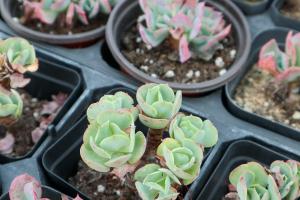How to Reroot a Spider Plant
Introduction
Spider plants, also known as Chlorophytum comosum, are among the most common houseplants, known for their graceful, arching leaves and ability to propagate easily. Whether you're expanding your spider plant collection or rejuvenating a tired-looking plant, Rerooting is an effective way to multiply your plant's greenery. In this article, we'll explore the steps and tips you need to know on how to reroot a spider plant for optimal success.
Step 1: Select a Healthy Parent Plant
The first step in rerooting your spider plant is to find a healthy parent plant by examining the foliage and roots. Choose a plant that has vibrant, green leaves and solid, strong roots. Avoid using a plant that is yellowing, has insect damage, or damaged roots.
Step 2: Prepare Your Tools and Supplies
Before proceeding with the rerooting process, make sure you have all the necessary tools and supplies. You will need a clean, sharp pair of scissors or pruning shears, a small container, and potting soil.
Step 3: Cut the Spider Plant
Using your scissors or pruning shears, carefully cut away the stem that has a few spiderettes or "babies" growing from it. Make sure to include a few inches of stem so that the new spiderettes will have enough space and nutrients to grow once transplanted.
Step 4: Prepare Your Container and Soil
Fill your small container with potting soil, leaving enough room at the top for watering. Make sure to moisten the soil before placing your cuttings in it. This will help promote root development.
Step 5: Plant the Spider Plant Cutting
Insert the stem of the spiderette into the soil, firming it down gently to ensure that it's not too loose or too compact. Water the newly planted spiderette lightly to help settle the soil.
Step 6: Choose the Right Location and Care for Your New Plant
Once you've planted your spiderette, place it in a bright, warm location but avoid direct sunlight. Water it every few days to keep the soil moist, but be careful not to overwater, as spider plants can develop root rot if they sit in water for too long. Within a few weeks, you should start to see new growth from the spiderette, indicating that it has successfully rerooted.
Tips for Rerooting Spider Plants
- The best time to reroot a spider plant is during the spring or summer.
- Spiderettes are the easiest way to propagate spider plants, but you can also reroot stem cuttings in water or soil.
- Make sure to use a well-draining potting soil to avoid root rot.
- Avoid overfertilizing your new plant. Spider plants prefer slightly acidic soil with a pH between 6.0 and 6.5.
- Spider plants are air-purifying, making them an ideal choice for indoor spaces.
Conclusion
Rerooting a spider plant is a simple and rewarding process that can help you multiply your plant collection effortlessly. By following the steps outlined in this article and adhering to the tips for rerooting spider plants, you can have a lush and healthy spider plant in no time.

 how many times do yo...
how many times do yo... how many planted tre...
how many planted tre... how many pine trees ...
how many pine trees ... how many pecan trees...
how many pecan trees... how many plants comp...
how many plants comp... how many plants can ...
how many plants can ... how many plants and ...
how many plants and ... how many pepper plan...
how many pepper plan...































